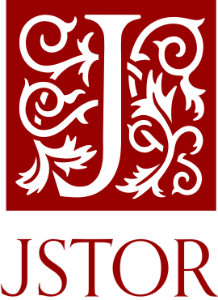Editorial Policy
The Journal for the Study of Radicalism engages in serious, scholarly exploration of the forms, representations, meanings, and historical influences of radical social movements. With sensitivity and openness to historical and cultural contexts of the term, we loosely define “radicals,” as distinguished from “reformers,” to mean groups who seek revolutionary alternatives to hegemonic social and political institutions, and who use violent or non-violent means to resist authority and to bring about change. The journal is eclectic, without dogma or strict political agenda, and ranges broadly across social and political groups worldwide, whether typically defined as “left” or “right.”
JSR‘s primary purpose is to serve as a venue for fine scholarship in this developing academic field. We expect contributors to come from a wide range of perspectives and disciplines, and we especially welcome articles that reconceptualize definitions and theories of radicalism, feature underrepresented radical groups, and introduce new topics and methods of study. We seek articles that make a clear larger point, and that offer a conceptual contribution to the field.
All manuscripts submitted for publication consideration must be original work that has not been published previously and is not currently under review by any other publication outlet.
Manuscript Preparation & Submission
- Submit papers (electronic files only) in Microsoft Word format by email attachment to jsrmsu@gmail.com. Retain both print and electronic copies of your work to guard against loss in transit.
- Please refer to the Chicago Manual of Style and the MSU Press journals style guide to prepare manuscript for submission
- Articles accepted for publication must have a signed Author Publishing Agreement; they cannot be printed otherwise
- List all accented letters or special characters on separate page at beginning of text.
- Use 1-inch margins throughout; number each page; use left-aligned margins (“ragged” right); double space all text, including quotations, notes, and captions.
- Do not hyphenate words at ends of lines; do not use headers or footers with identifying information. Use tab key (not space bar) to indent first lines of new paragraphs.
- Spell out numbers from one to ten. Use Arabic numerals for number 11 and above. Exceptions to this rule: (1) a series of mixed numbers (e.g., 14 cities, 2 small towns, 11 villages, and 8 settlements); (2) when a number precedes an abbreviation for a standard unit of measure (e.g., 3 g, 18 mm, 6 m). Use numerals for all dates, times, page numbers, and percentages.
- Use continental dating (13 April 1892) throughout.
- Photographs, maps, or other graphics must be accompanied by permission from copyright holders for both print and electronic use. Electronic photographs must be minimum 300 dpi resolution at full size (size when printed in journal). Refer to MSU Press’s Images & Derivate Materials policy below for full information.
- References must use endnote—not footnote or author-date—system (Chicago, chapter 14). Insert notes in separate section at end of document.
EXAMPLES
BOOK
Karlyn Kohrs Campbell and Kathleen Hall Jamieson, Deeds Done in Words: Presidential Rhetoric and the Genres of Governance (Chicago: University of Chicago Press, 1990), 10–12.
ARTICLE
H. W. Brands, “The Age of Vulnerability: Eisenhower and the National Insecurity State,” American Historical Review 94 (1989): 963–89.
CHAPTER
Fred Greenstein, “Eisenhower’s Leadership Style,” in Eisenhower: A Centenary Assessment, ed. Gunter Bischof & Stephen E. Ambrose (Baton Rouge: Louisiana State University Press, 1995), 55–63.
SUBSEQUENT SHORTENED CITATIONS SHOULD READ AS FOLLOWS (do not use Ibid.)
- Campbell and Jamieson, Deeds Done in Words, 10.
- Brands, “Age of Vulnerability,” 963.
- Greenstein, “Eisenhower’s Leadership Style,” in Eisenhower, 55.
Images & Derivative Materials
It is the author/researcher’s obligation and responsibility to determine and satisfy copyright and/or other use restrictions prior to submitting materials to MSU Press for publication. Citations, permissions, and captions are required upon submission for all images. Use the JSR Permission Request Letter to obtain permission from the image’s rightsholder—we cannot publish such materials until clearance is obtained. Electronic files accepted; all images must be minimum 300 dpi at planned publication size.



